-
Top 10 Free Things to Do in Monterey

Planning your visit to the Monterey area but dreading the cost? Need some budget friendly options? While it is true that many things are costly here, there are also tons of super fun activities that are completely free. And what could be better than that? Here is my list of the top ten free things to do in Monterey.

Free Beaches
Bring your beachitude because sand, sun, and water await. Take your pick of beaches: Delmonte, Mcabee, San Carlos, Breakwater Cove, Lovers Point, Asilomar, Carmel, Carmel River, and the list goes on and on. Find treasures in tide pools, build sandcastles, fly a kite, watch surfers, scuba divers, paddle boarders and kayakers, or catch a glimpse of pelicans and harbor seals. You may even spot a dolphin or whale! If you choose Asilomar Beach, you may also want to check out nearby Point Pinos Lighthouse. Located at the corner of Asilomar and Lighthouse in Pacific Grove, the lighthouse is currently closed to visitors, but you can still view it from afar.


The beginning (or end) of the trail at Lovers Point in Pacific Grove. Free Recreation Trail
Walk, run or bike next to the beauty of the ocean on the fantastic Monterey Bay Coastal Recreation Trail. This wide paved trail follows the old abandoned Southern Pacific railroad line and passes by or through all the tourist hot spots including Cannery Row and Fisherman’s Wharf. You will also have many views of and access to several beaches. My favorite part is between Monterey and Seaside, when you pass through a canopy of heavenly scented eucalyptus trees. The trail stretches for 18 miles from Lovers Point to Castroville. Dogs on leash are welcome. For more information, see rec trail.

Free Secret Gardens
Visit the secret gardens scattered throughout old Monterey. Peaceful and serene, these walled gardens are sure to delight, and many have benches where you can sit and read a book, enjoy a picnic, or simply contemplate the beauty around you.
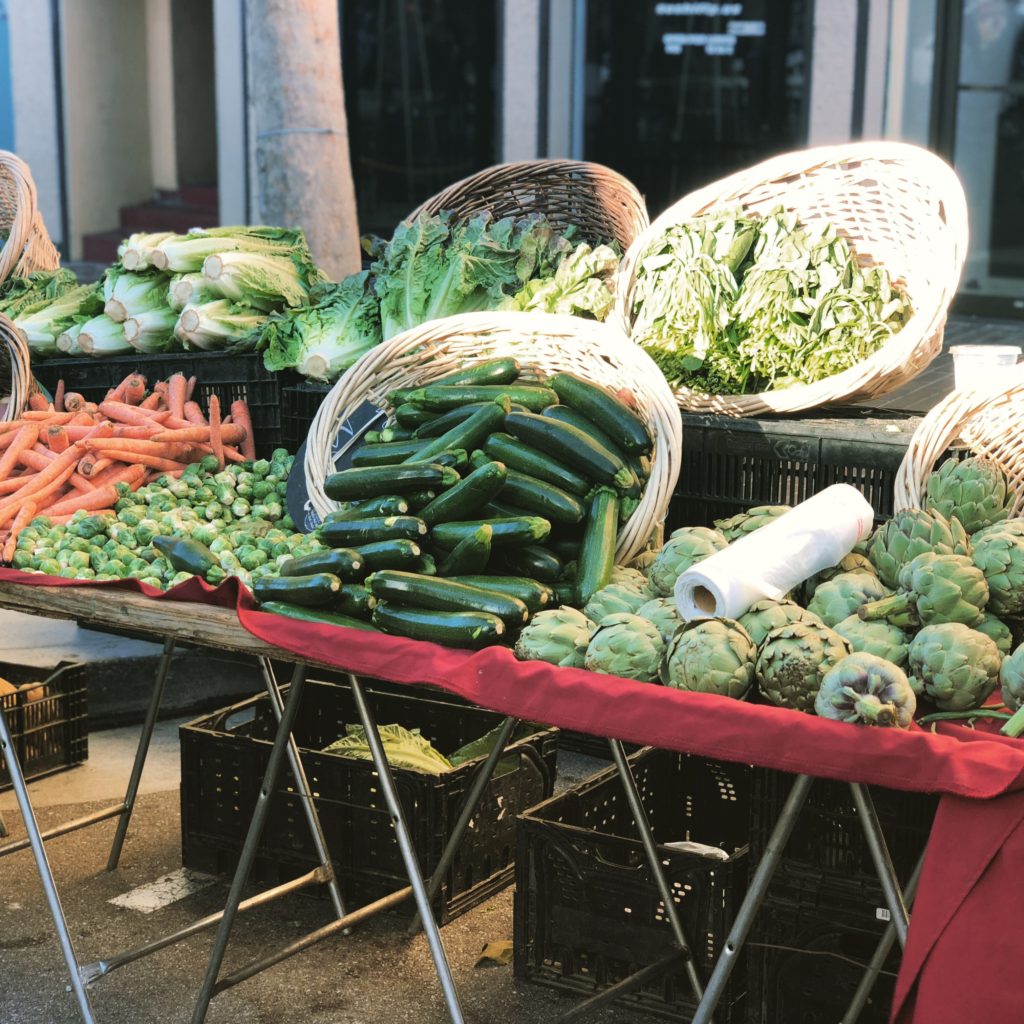
Free Farmer’s Markets
Check out local farmer’s markets. There are Farmer’s Markets every day of the week here! My favorite is the one on Alvarado in old Monterey on Tuesdays. Three blocks are closed off to allow tons of vendors selling fresh fruits and vegetables, crafts, yummy food and more. For more information, see local farmer’s markets.

Free Picnics
Enjoy a romantic picnic with your love(s). Check out my list of the Ten Best Picnic Spots in the area.

Haunted Hall & Jail
Visit a spooky jail and courthouse where people were hanged outside on the balcony. Built in 1849 in the Greek Revival Style, Colton Hall has a colorful history. It was named after Walter Colton, who was mayor, coroner, judge, and sheriff (in addition to other titles) from 1846-1849. In 1854, a jail was built next to it. It’s said that no one ever escaped from the jail due to its thick granite walls. Those convicted to death were hung by a rope over the balcony on the second floor. While there are thankfully no longer any hangings at Colton Hall, there is a free history museum, located on the second floor. There you can learn about how California became a state here, and see a copy of the original constitution. For more information, see Colton Hall and Old Monterey Jail.

Tool Around Town on a Trolley For Free
Save money on parking, avoid traffic congestion, and escape a potential parking ticket by taking the trolley. Completely free, the MST trolley operates July 3rd through September 6th, 10 am to 6 pm daily. Sites it visits are downtown Monterey, the Monterey Bay Aquarium, Cannery Row and Fisherman’s Wharf. For more information including schedule and departure/drop-off sites, see Monterey Trolley.

Clam It Up
Sample scrumptious clam chowder at Fisherman’s Wharf…for free! There is nothing like the taste of clam chowder here. Perhaps it is the backdrop of the cool ocean breeze, the cacophony of crying seagulls and barking sea lions, and the colorful boats bobbing in the harbor. Whatever makes it taste so good, I don’t know, but Monterey clam chowder is simply magical.

Happiness is a Hike
Drink in all the natural beauty the area has to offer by going for a hike. Check out the twelve best places to hike in Monterey County!
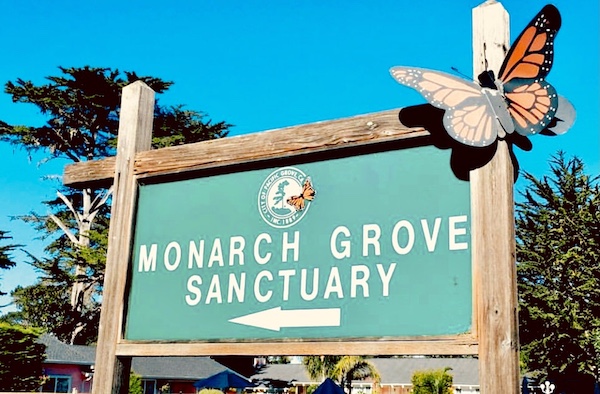
Butterflies Are Free
A must-see, the Monarch Butterfly Sanctuary is located in nearby Pacific Grove, called PG by locals. Thousands of monarch butterflies overwinter here on the Monterey pines and eucalyptus trees from October through March. This has given PG the moniker “Butterfly Town”. Butterflies are free to fly, and so are you. No wings or cha-things required. For more information, see Sanctuary.
.

I hope you enjoyed learning about all the fun things to do in the Monterey area for free. Because the best things in life are indeed free. You may also enjoy Delicious Places to Eat in Monterey on a Budget. Thank you for visiting my blog. Wishing you peace, love, happiness & beautiful vistas!
-
The Secret Gardens of Historic Monterey
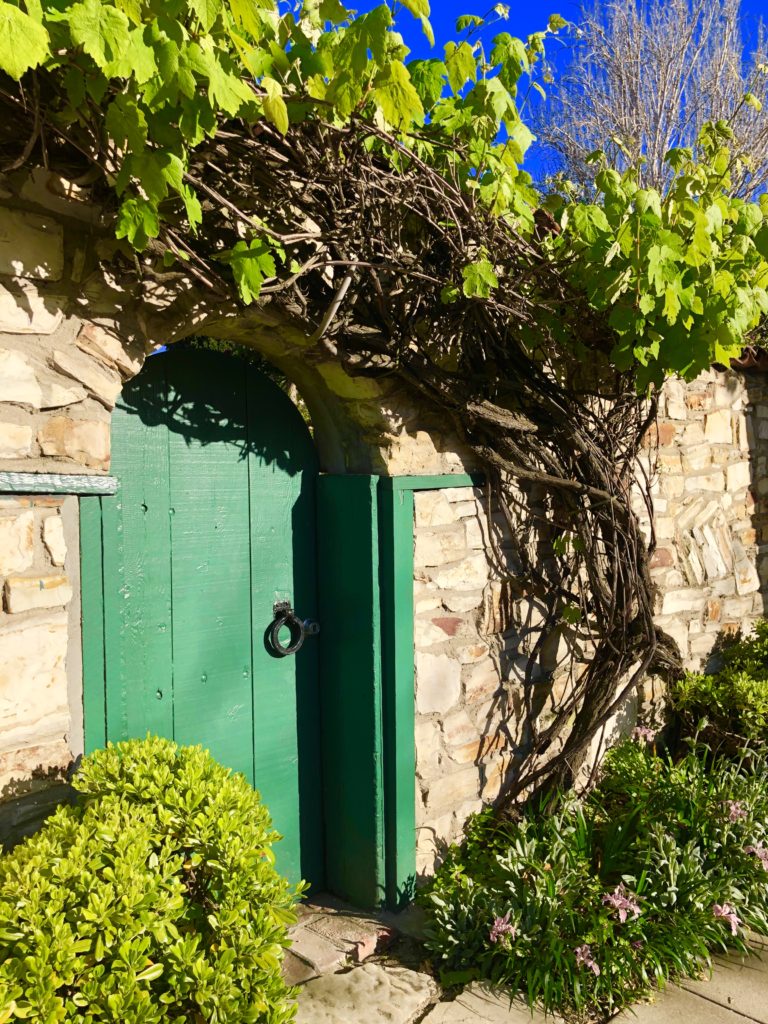
Often hidden behind a wall or a gate, secret gardens denote mystery, privacy, and solitude. Secret gardens offer solace; a place to sit or walk and contemplate. They give you permission to be inspired, to dream, and to be at peace.
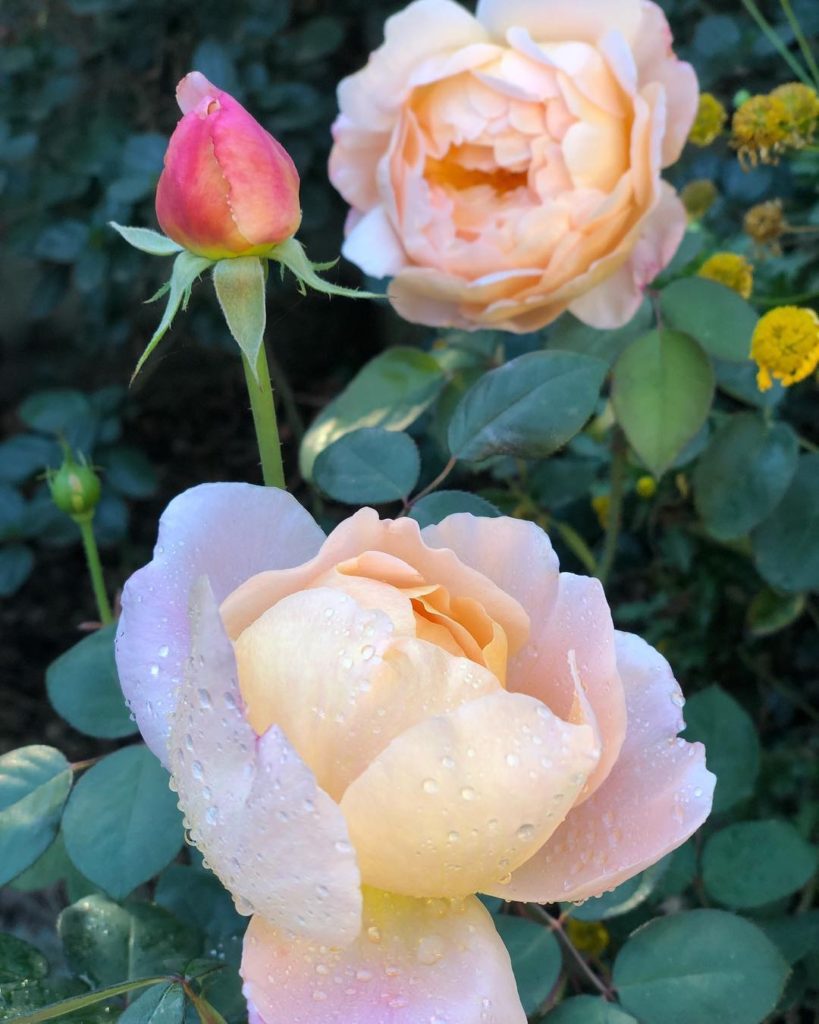
My own garden has its secrets: I love to share them with friends who come to enjoy the peaceful solitude of my farm. The roses that defy being eaten by deer, puzzling my neighbors. The “April in Paris” sweet peas that have self-sown and freely proliferate. The mesmerizing scent of the white, star-flowered jasmine that grows just outside my bedroom, perfuming the night air.
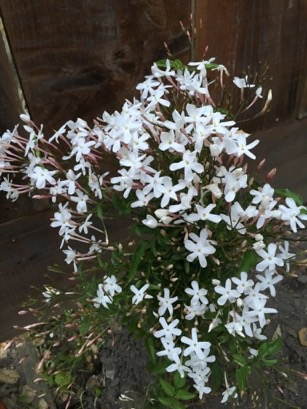
Monterey has some of the most fascinating and delightful secret gardens ever. What makes these gardens so special is that they are located on the grounds of some of the most historic properties in Monterey. The secret gardens here are all completely unique, enticing you with beautiful colors and heavenly scents.
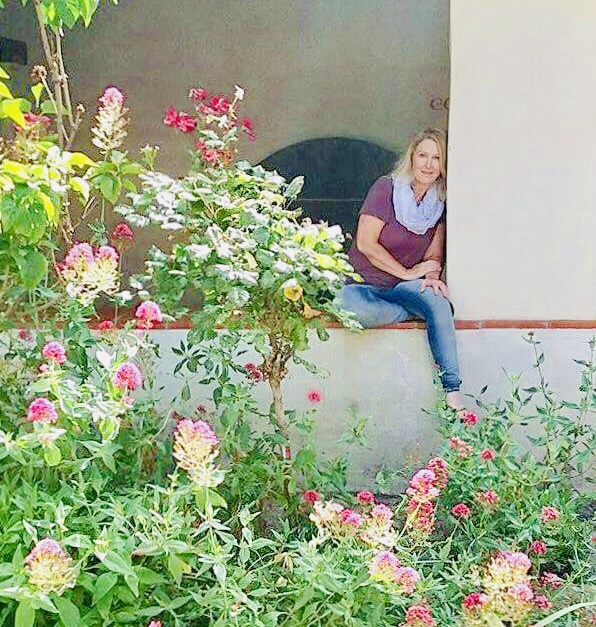
1. The Larkin Garden is located at 510 Calle Principal at the intersection with Jefferson. Thomas Larkin built the two-story mud adobe brick home during Mexican rule of California. An American merchant, he became the only United States Consul to Alta California under Mexican rule.
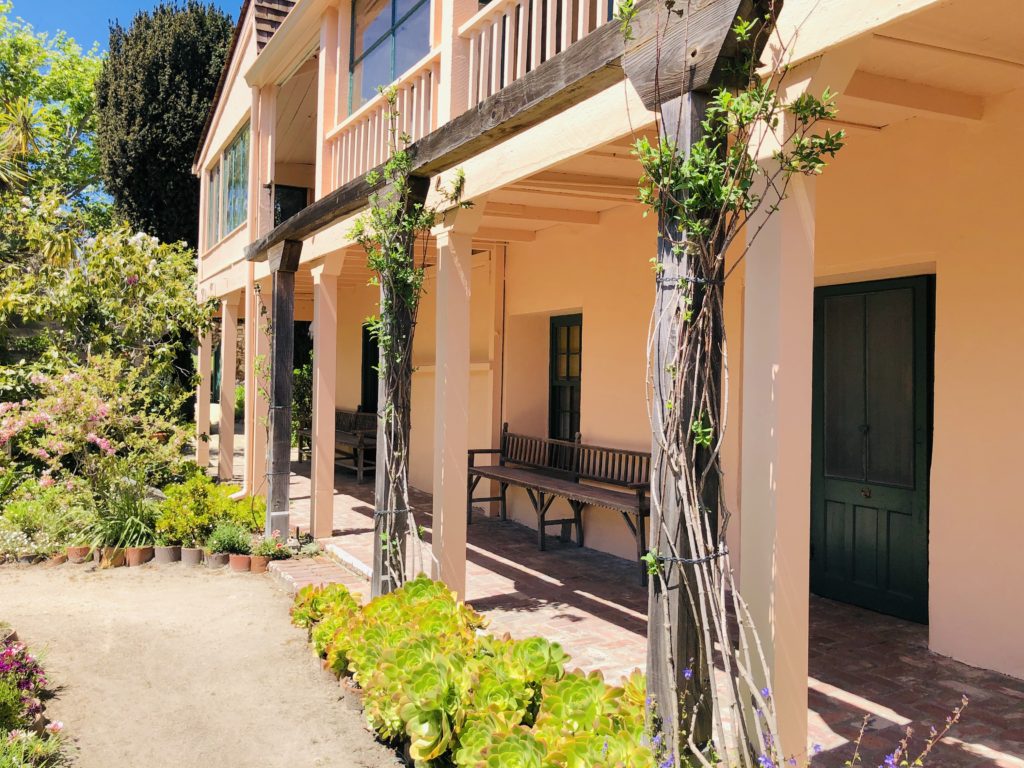
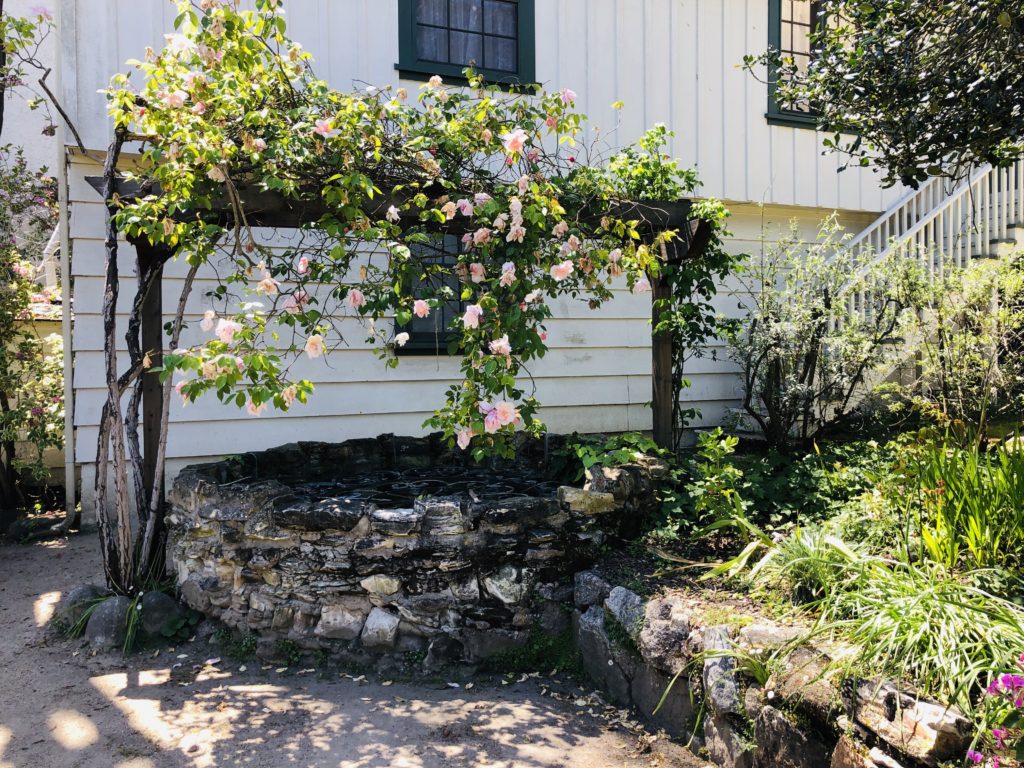
A wishing well covered with climbing roses draws your eye at the Larkin secret garden. 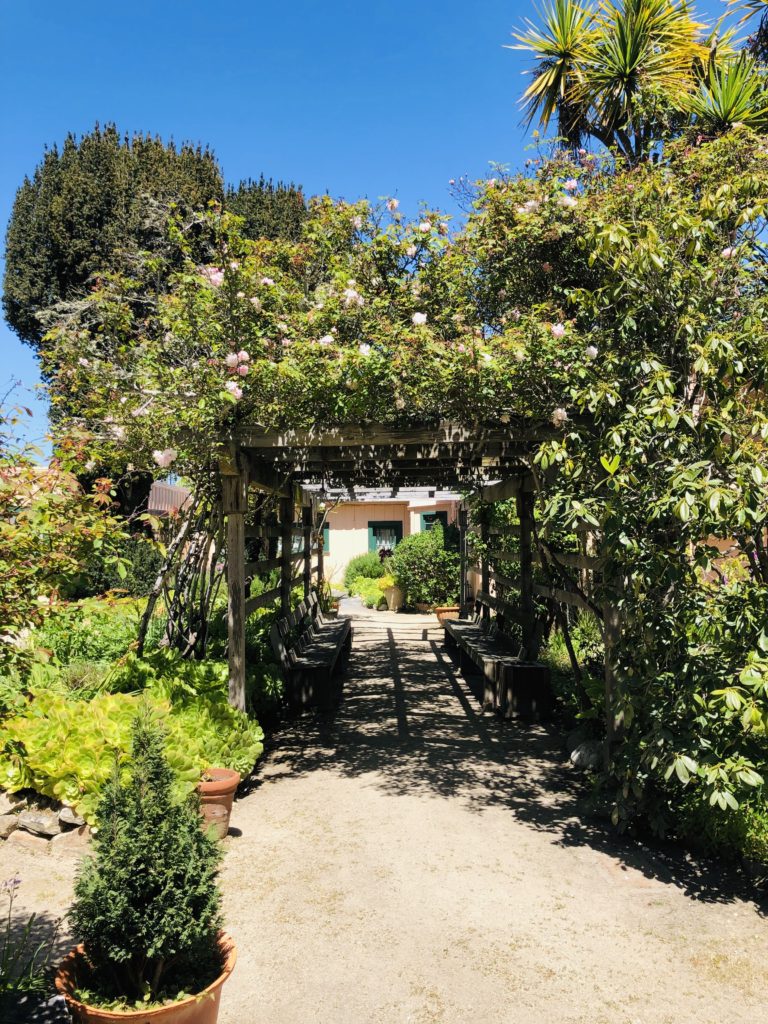
2. The Memory Garden, located at 20 Custom House Plaza in Monterey, was designed by Frederick Law Olmstead, Jr. in 1927. It has an 8-foot high adobe wall and three gates. Inside the garden is a 15-foot diameter fountain surrounded by lovely magnolia trees.
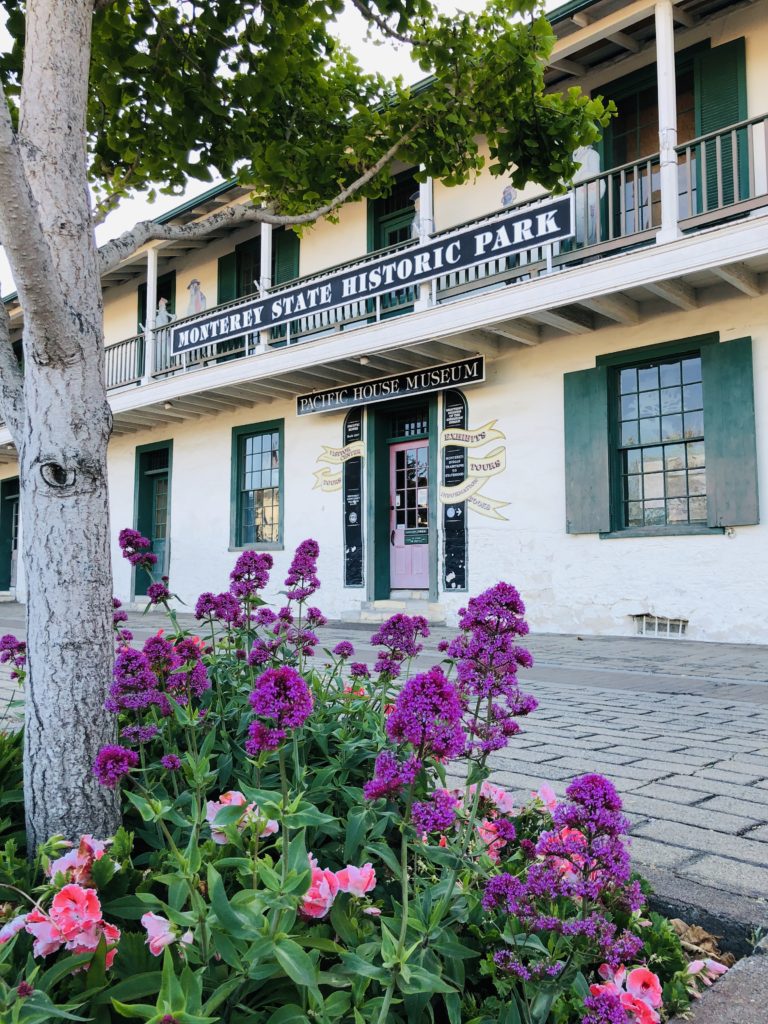
The Memory Garden lies behind the Monterey State Historic Park office and Pacific House Museum. 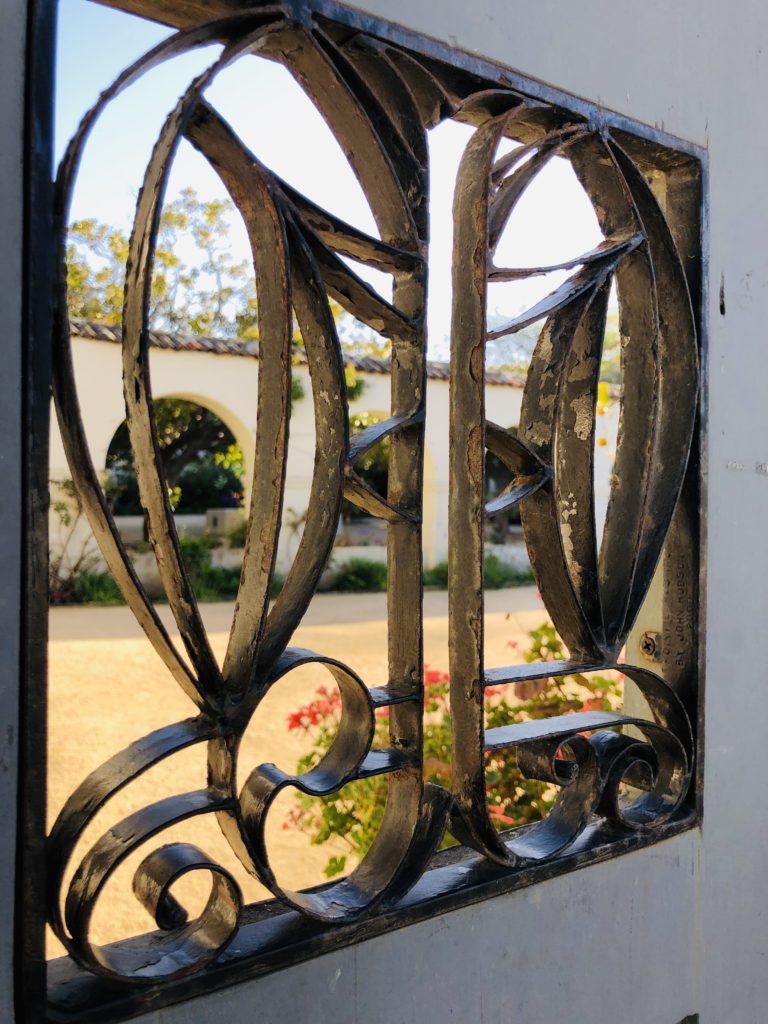
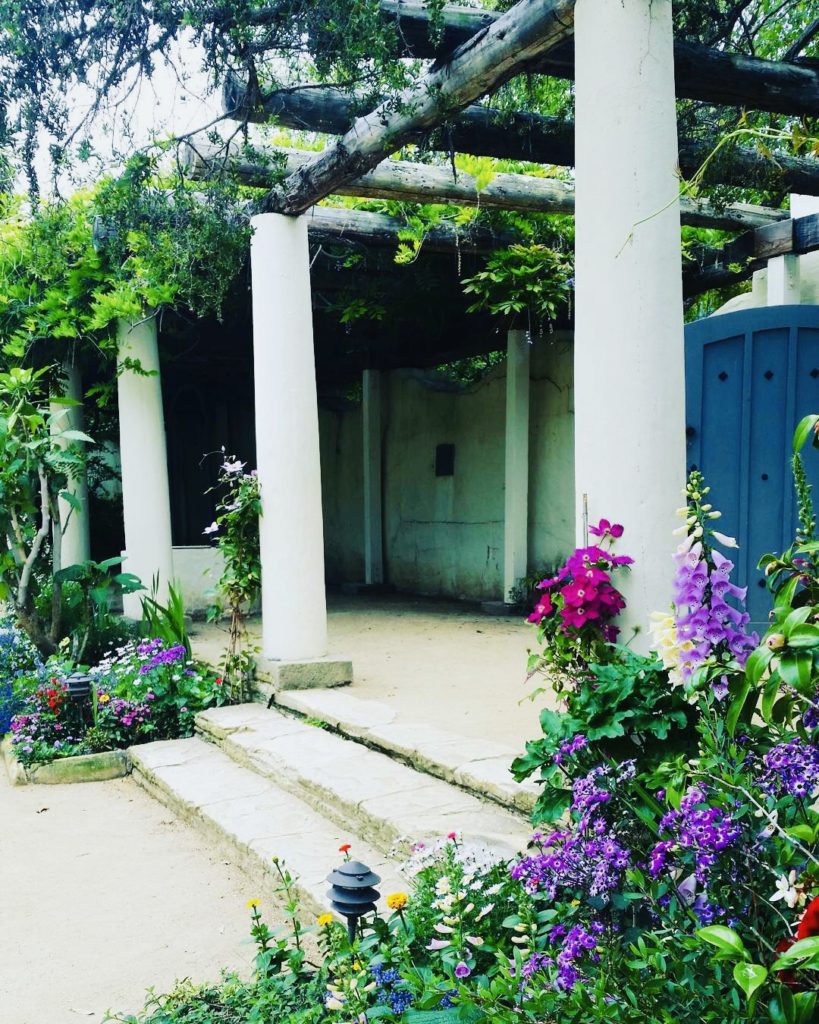
3. The Casa del Oro Garden is at the corner of Pacific and Scott Streets just across from the First Theatre. This is the only garden not enclosed by a wall.
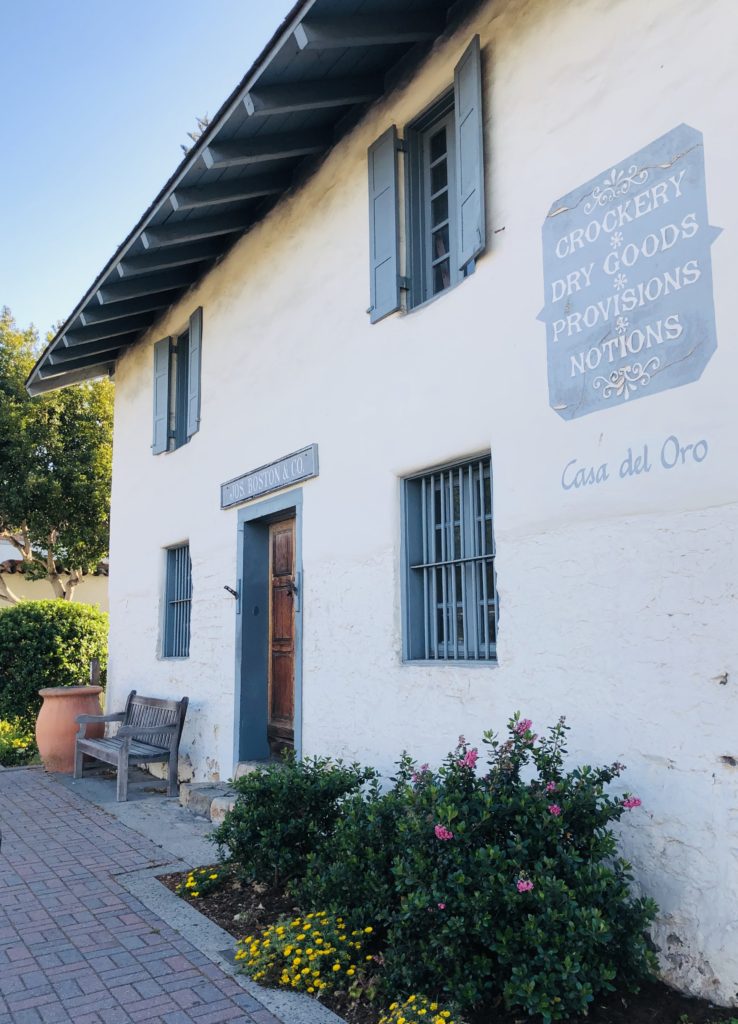
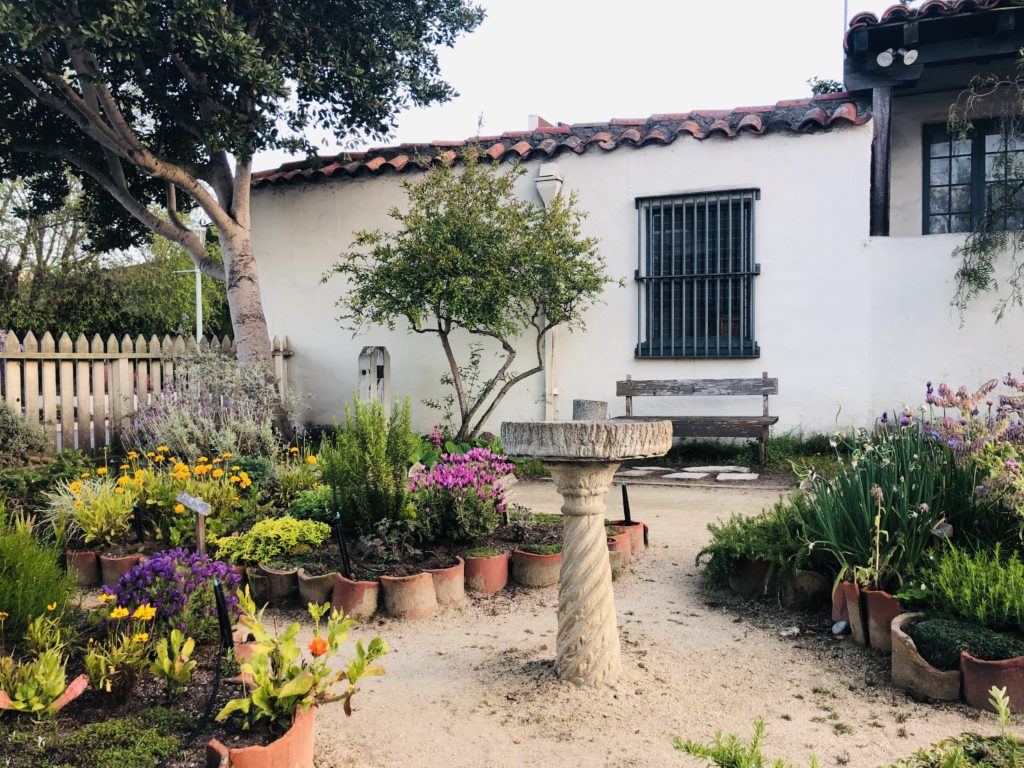
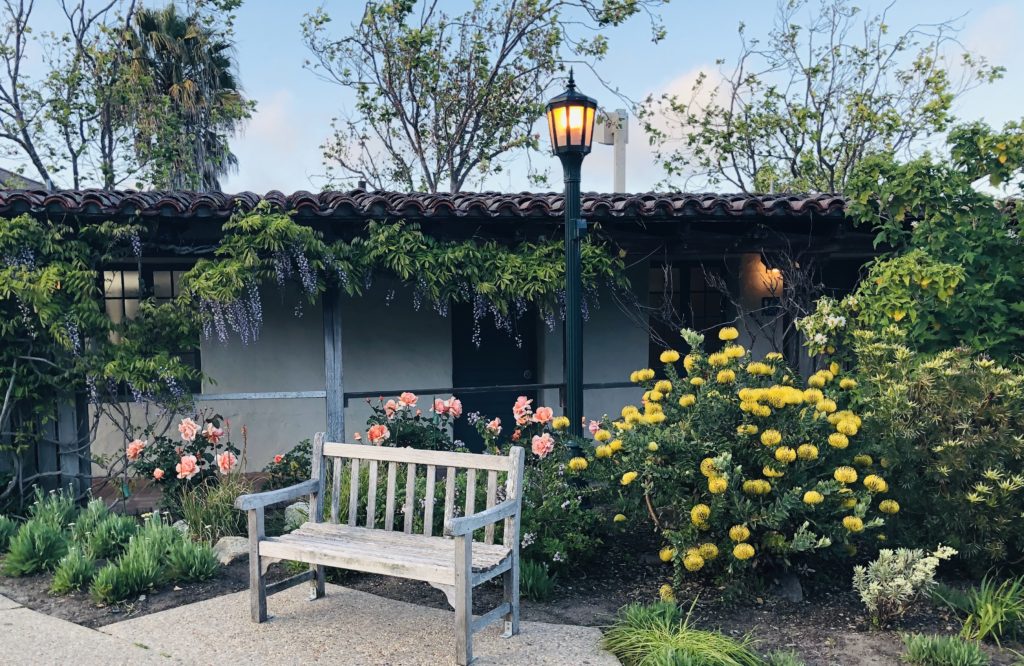
4. The Stevenson Garden is named for the boarding house where Robert Louis Stevenson stayed in 1879 while courting his future wife, Fanny Osbourne. He stayed on the second floor of the French Hotel at 530 Houston Street and worked on essays as well as ideas for future works, including Treasure Island.
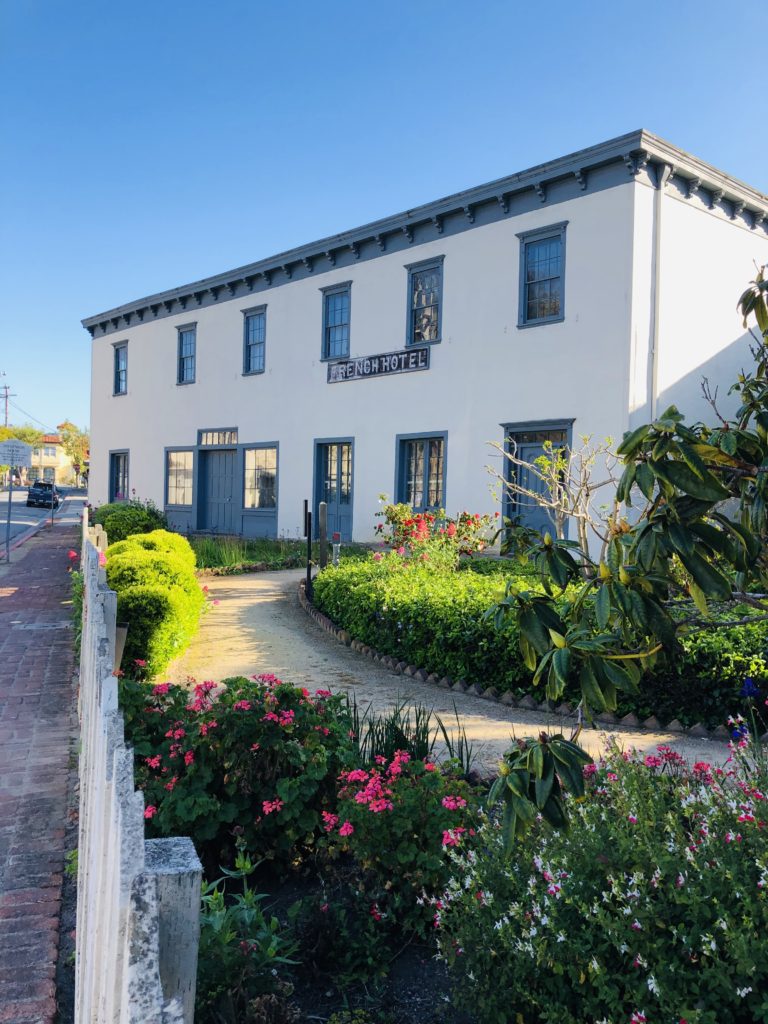
In front, a white picket fence frames a bevy of blooms. Behind the old French Hotel is the secret garden, featuring meandering pathways surrounded by high fencing and featuring an ancient gate at the rear.
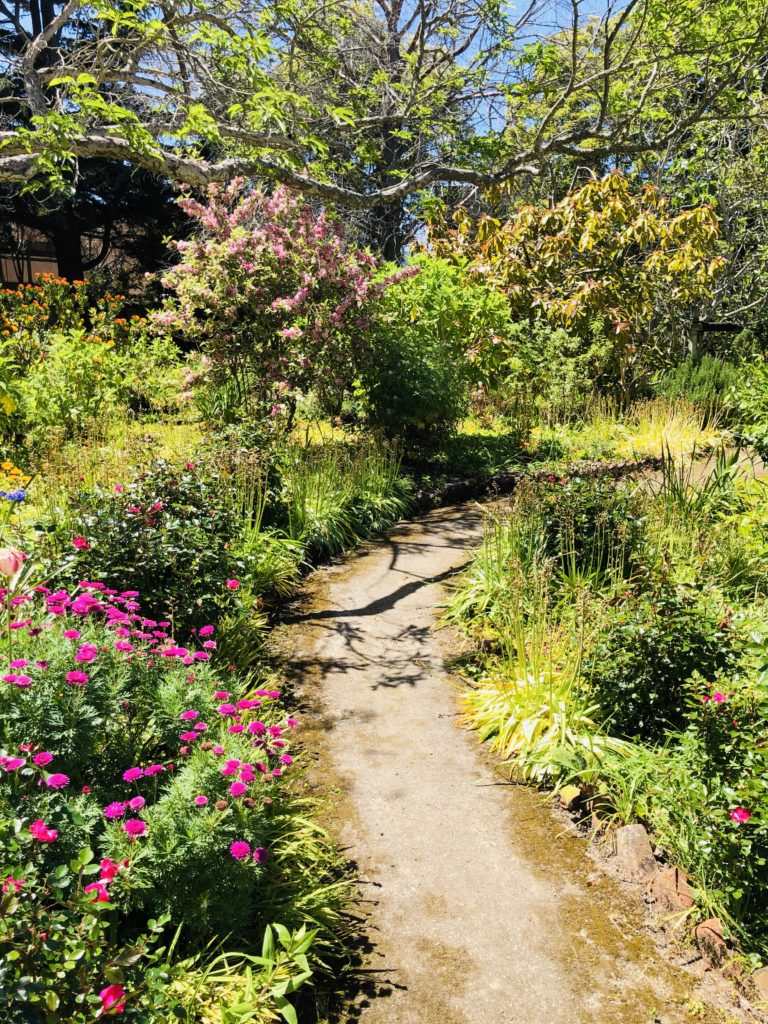
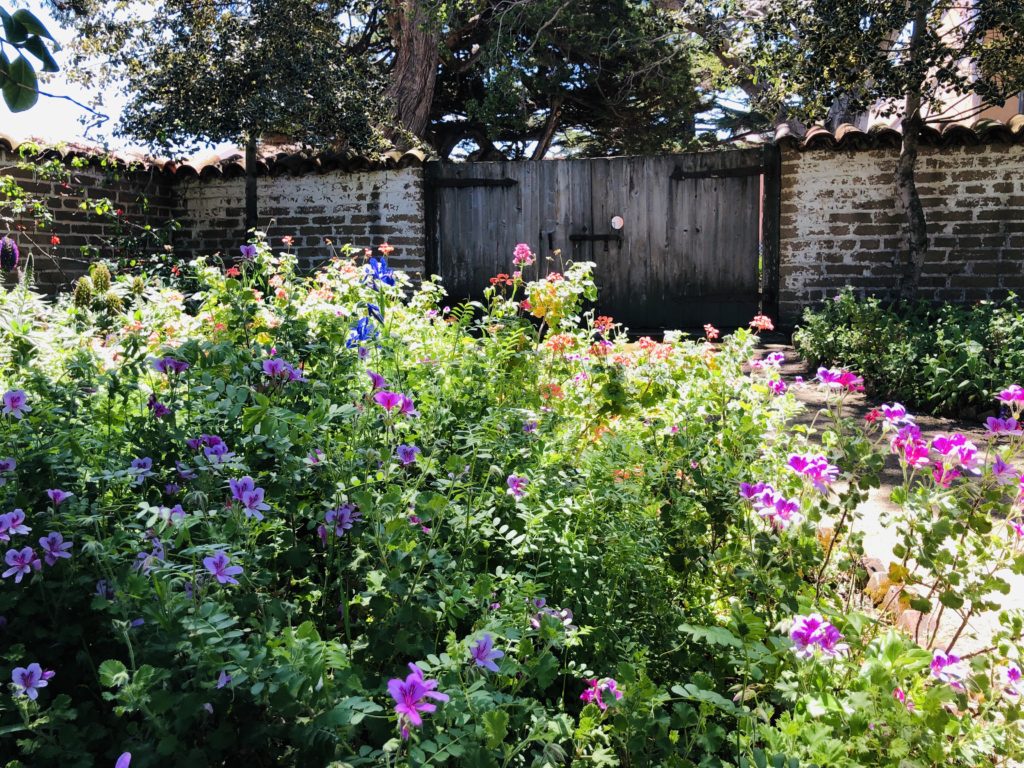
5. The Casa Soberanes Garden, located at the corner of Pacific and Del Monte, features abalone shells and wine bottles as edgings for the flowerbeds in its secret garden.
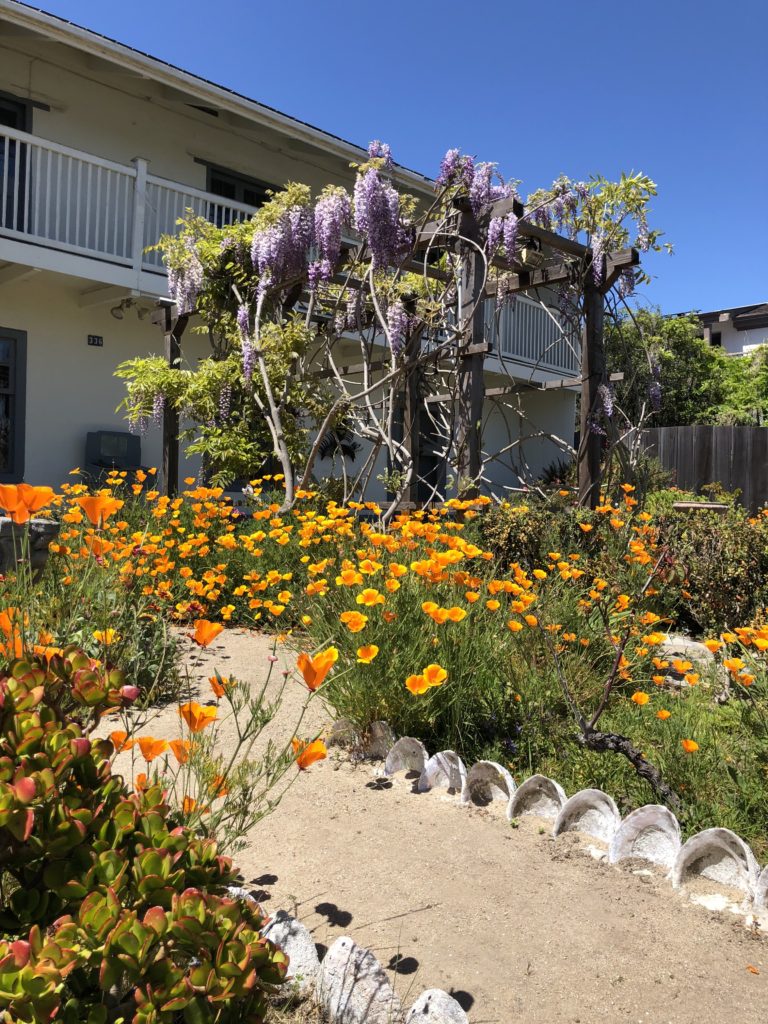
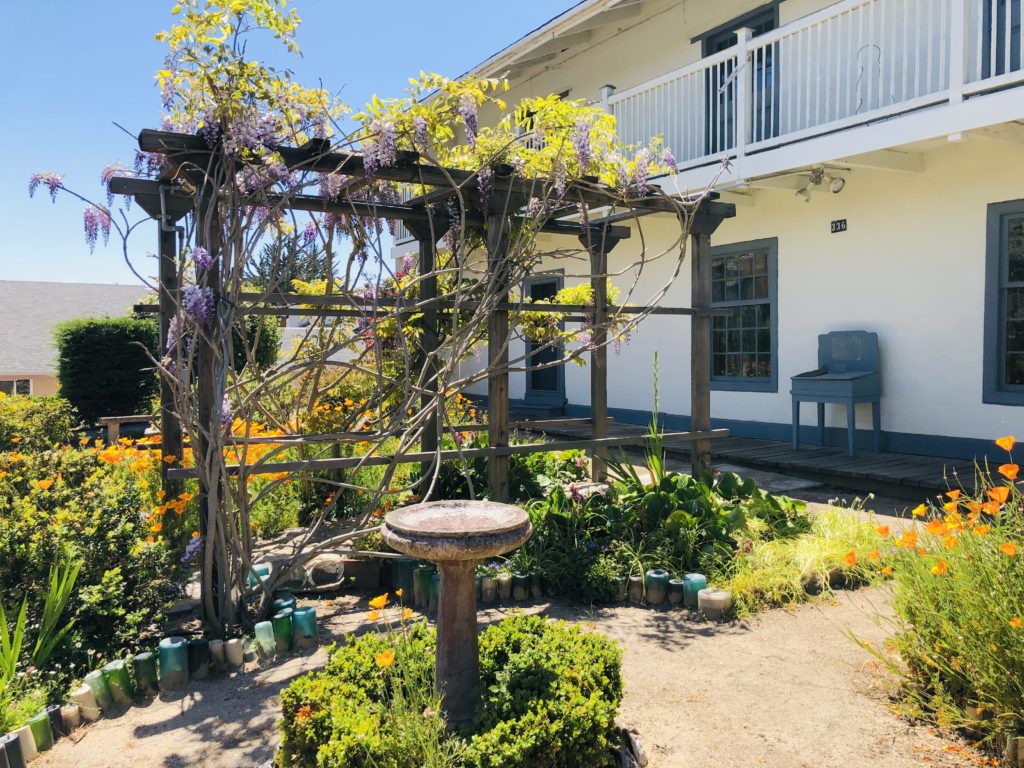
6. The First Theatre Garden is located at the corner of Pacific and Scott Streets. Whale bones frame the entrance of the theatre building, vestiges of Monterey’s whaling history.
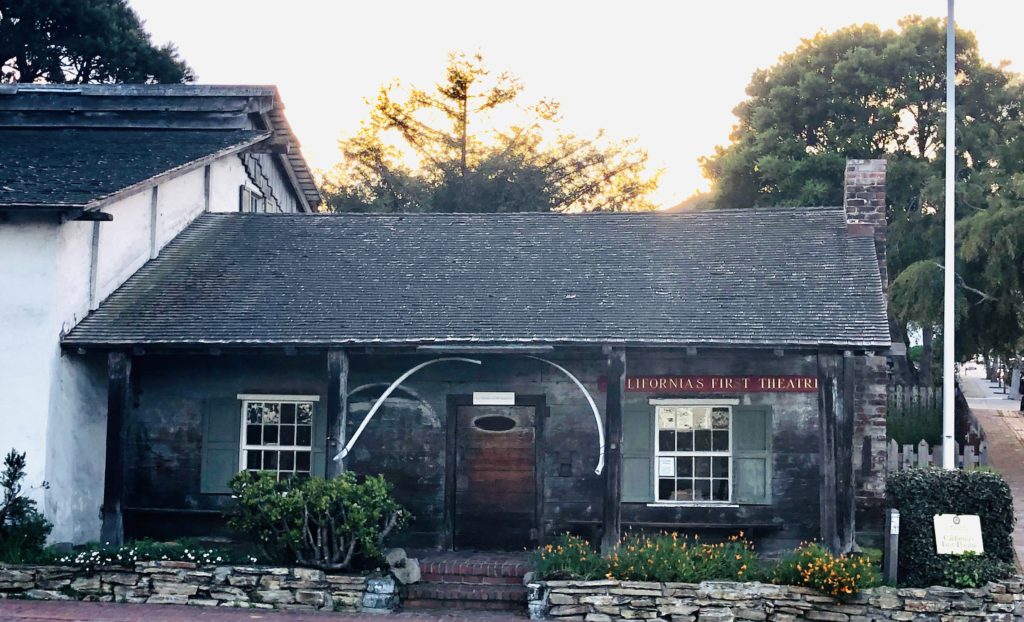
California’s first theater was built in 1847 by Jack Swan for use as a lodging house and tavern for sailors. It became a theatre in 1850. 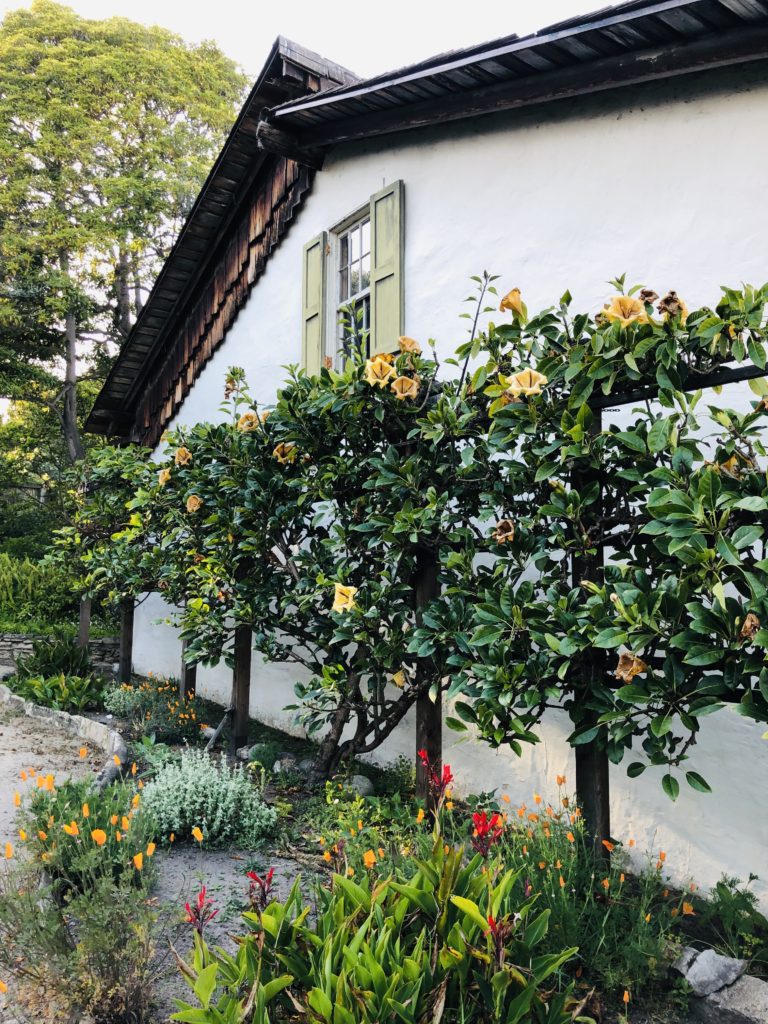
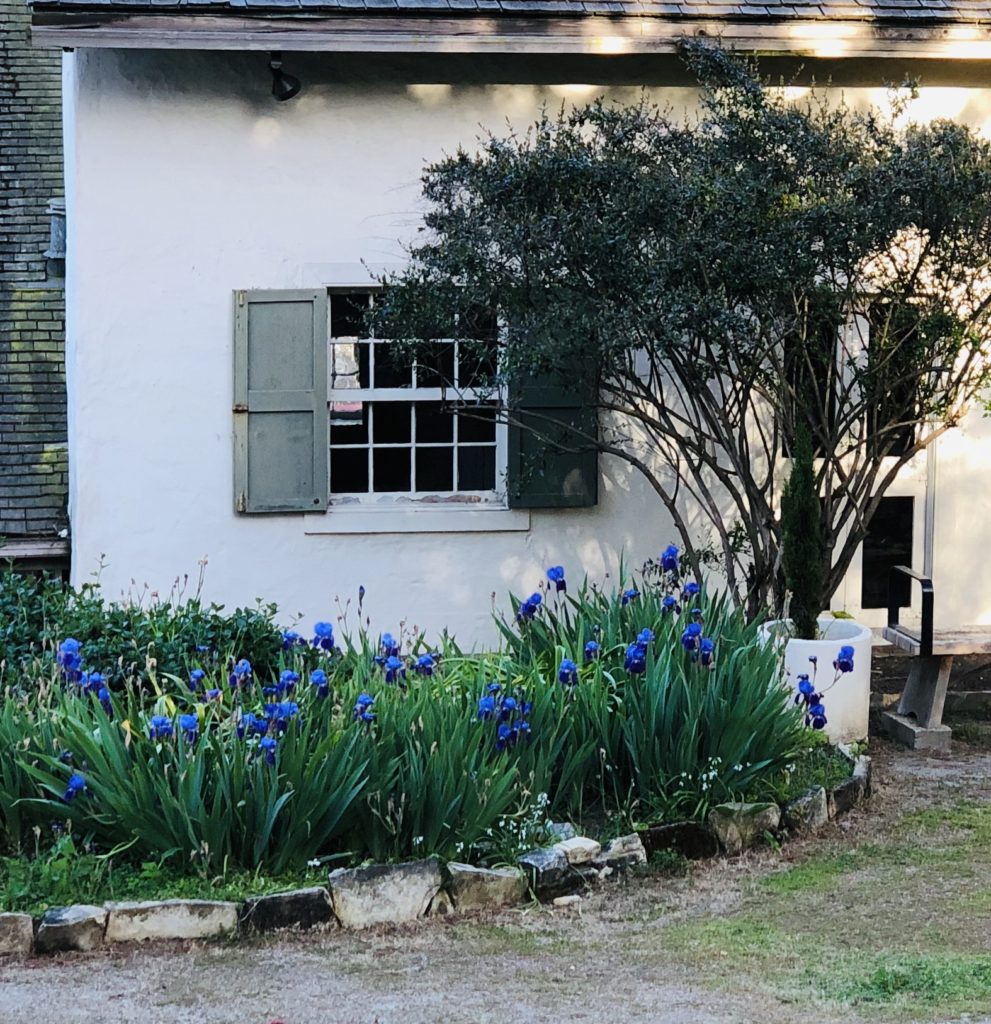
7. Hidden behind a very old wall at the corner of Polk and Munras is the Cooper Molera Adobe secret garden and orchard, Built in 1827, the property is a National Trust Historic Site. What fun to meander among the rustic elegance of the only historic redwood barns within the city limits of Monterey and enjoy the charming and beautiful plants and flowers here.
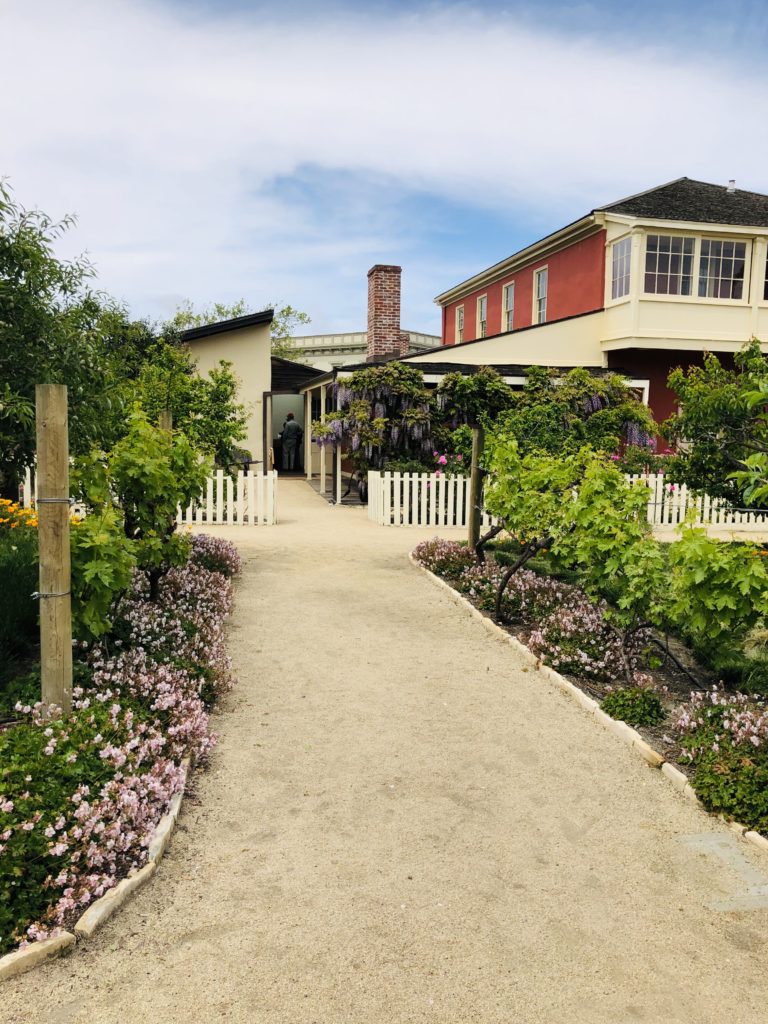
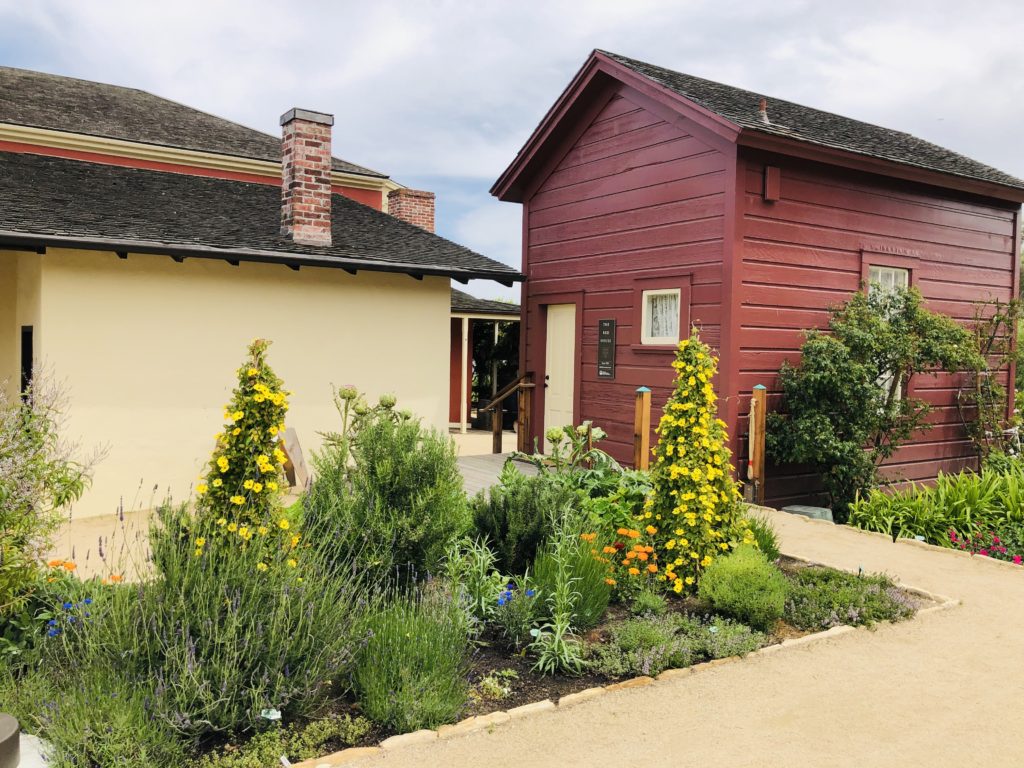
The paths here are wide and easy to navigate throughout the beautiful flowerbeds and the orchard. 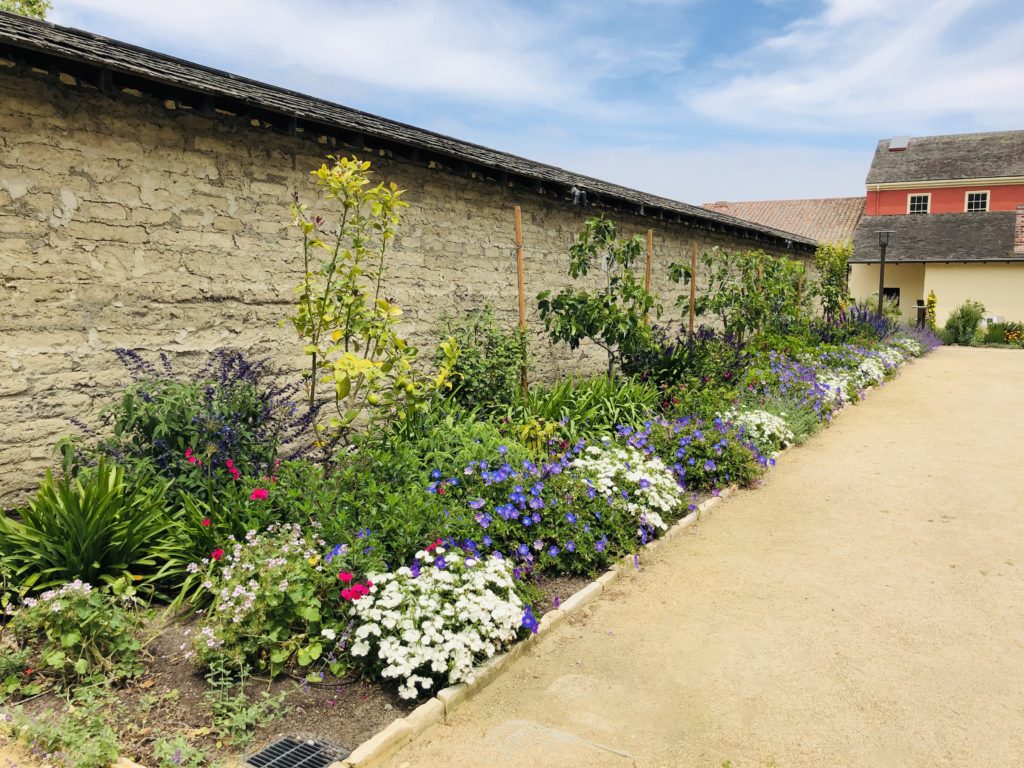
Hours: The Larkin, Memory, Casa del Oro, Stevenson, Casa Soberanes, and First Theatre gardens are open daily from 9 am-4 pm. For more information, see California State Parks. Hours for the Cooper Molera garden are Tuesday through Saturday: 11 am – 4 pm, and Sunday 11 am– 2:30 pm.

I hope you enjoyed this post and are able to visit the secret gardens of Monterey. Thank you for visiting my blog. Wishing you peace, love, happiness, and beautiful vistas!
-
Obon Festival in Seaside, California
Obon translated means “Lantern Festival” or “Festival of the Dead”, and is a holiday honoring those who have passed on. Obon is somewhat like the Day of the Dead, the Celtic Samhain, or in Catholicism, All Souls Day, which all involve paying homage to loved ones who are now departed. But it is also a celebration, filled with large gatherings, family reunions, and bright lanterns. One very beautiful Obon ceremony in Japan is the lighting of paper lanterns and sending them out to sea in honor of ancestors who have died..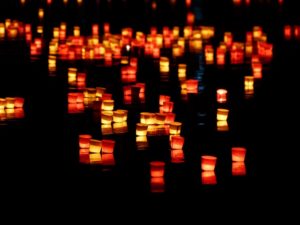 The first American Obon Festival was held in Hawaii in 1910 but not in the continental United States until 1931 when it was held at the Buddhist Church in San Francisco. Obon Festival has since remained one of the most important Japanese-American traditions here.
The first American Obon Festival was held in Hawaii in 1910 but not in the continental United States until 1931 when it was held at the Buddhist Church in San Francisco. Obon Festival has since remained one of the most important Japanese-American traditions here.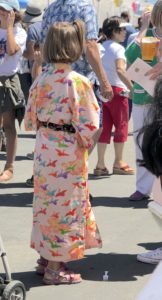
 The Buddhist Temple of the Monterey Peninsula held their 72nd annual Obon Festival today, July 8, 2018, at 1155 Noche Buena Street in Seaside, California from 12:00– 5:00 p.m. This festival draws a huge crowd and is always fun. People show sincere Obon enthusiasm and the wearing of Japanese inspired clothing is encouraged.
The Buddhist Temple of the Monterey Peninsula held their 72nd annual Obon Festival today, July 8, 2018, at 1155 Noche Buena Street in Seaside, California from 12:00– 5:00 p.m. This festival draws a huge crowd and is always fun. People show sincere Obon enthusiasm and the wearing of Japanese inspired clothing is encouraged.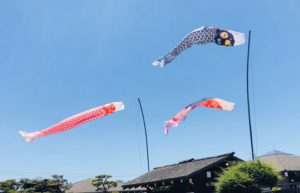 When you first approach the temple you see three koinobori (also known as carp) windsocks flying. In Japanese culture, the carp symbolizes courage and strength because of its ability to swim up a waterfall. In Buddhism, the fish is an embodiment of well-being, happiness, and freedom, and symbolizes living in a state of fearlessness, without danger of drowning in the ocean of sufferings.
When you first approach the temple you see three koinobori (also known as carp) windsocks flying. In Japanese culture, the carp symbolizes courage and strength because of its ability to swim up a waterfall. In Buddhism, the fish is an embodiment of well-being, happiness, and freedom, and symbolizes living in a state of fearlessness, without danger of drowning in the ocean of sufferings.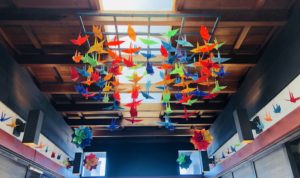 As you enter the temple you see origami crane garlands draping the walls and hanging from the ceiling. In Japan, the crane is a symbol of good health and luck. It is said that if you fold 1000 cranes, you are granted a good wish. “In folding paper cranes, we see how a small square of paper can magically transform into an expression of beauty, love, and compassion. The crane comes to life after we set an intention, pay careful attention to each fold, and at the final step, spread the crane’s wings wide for it to soar.” See Paper Cranes
As you enter the temple you see origami crane garlands draping the walls and hanging from the ceiling. In Japan, the crane is a symbol of good health and luck. It is said that if you fold 1000 cranes, you are granted a good wish. “In folding paper cranes, we see how a small square of paper can magically transform into an expression of beauty, love, and compassion. The crane comes to life after we set an intention, pay careful attention to each fold, and at the final step, spread the crane’s wings wide for it to soar.” See Paper Cranes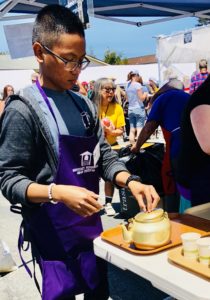
Free tea is offered to the public. It is delicious! 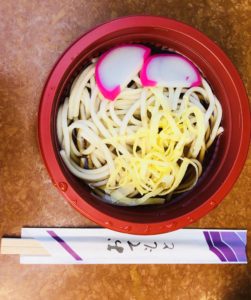
Udon, before being liberally sprinkled with scallions & shichimi What can you do at the Obon Festival? First, sample delicious Japanese foods prepared by chefs from local Japanese restaurants, including: tempura, sushi, beef and chicken teriyaki, udon (noodles in broth), Kushi katsu (deep fried pork), gyoza (steamed dumpling with ground pork and vegetables), lumpia (deep-fried egg rolls), & chicken karaage (fried chicken). I tried the udon and it was amazing!

Learning Japanese is easy when you have a good teacher! 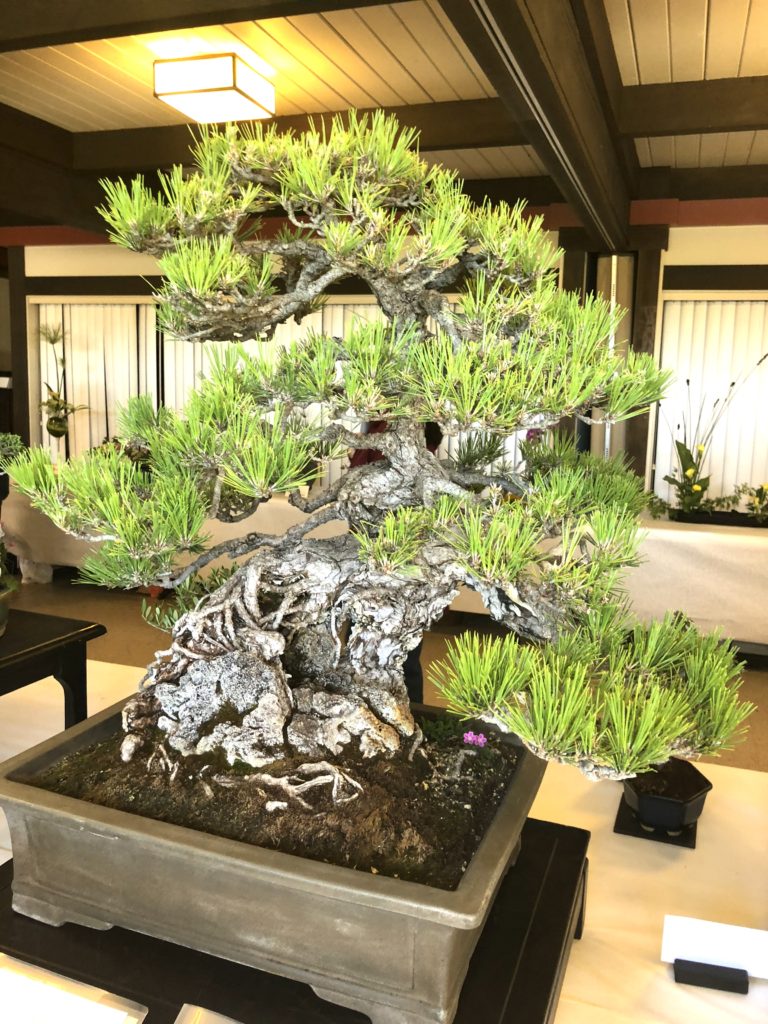
This Japanese Black Pine Bonsai is 69 years old! While at the festival you can listen to the rhythmic Taiko drumming and dance during the Bon Odori, or community Japanese folk dancing. You can listen to an educational lecture on Buddhism. You can learn how to speak and write Japanese. You can watch martial arts demonstrations and witness a traditional Japanese tea ceremony. There is also a beautiful display of bonsai and ikebana flower arrangements and great demonstrations on how to do it yourself. If you missed this great event today, there is always next year!
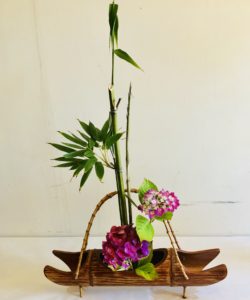
Beautiful Ikebana Arrangement Thank you for visiting my blog! Wishing you peace, love, happiness, & beautiful vistas!
-
Old Monterey Farmer’s Market on Alvarado Street
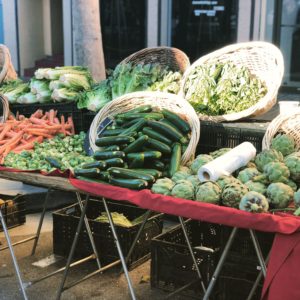
The sights, sounds and smells of the Old Monterey Farmer’s Market on Alvarado Street entice your senses the moment you get near. Vendors line the street selling fresh organic Medjool dates, turnips, carrots, broccoli, cauliflower, lettuce, artichokes, persimmons, lemons, grapefruit, apricots, almonds, raspberries & strawberries. Buckets of colorful flowers are scattered nearby. Street musicians play eclectic melodies on guitars, mandolins and violins as dogs lie dolefully next to them. Walk further along, and you will hear the crackling sound of Edith Piaf tinkling in the air. A man in a brown hat is playing very old records on an antique Victrola he has set up curbside.
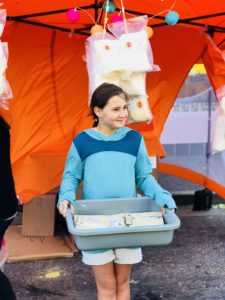
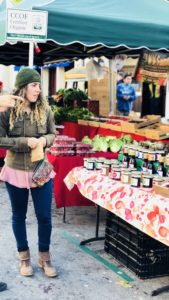
Life seems genuine and easy here, and you can slowly peruse everything pervading your senses. Two young girls are selling pineapple flavored cotton candy. There is a woman selling hats and another with hand-made jewelry. Next to her, a man hawks his organic eggs and glass jars of local honey. A grizzled fellow with exotic red and blue parrots and white cockatoos stands on the corner. Local bakeries have set up tables filled with pastries, baklava, donuts, cookies, cupcakes, churros, biscotti, pies, brownies, muffins and more. There is the smell of tamales, fried squid, and falafel melding in the air. In Monterey, variety is indeed the spice of life. You will find every cuisine here, including Indian, Mexican, Japanese, French, Cuban, Italian, Greek, Lebanese, Thai, & Korean, to name but a few.
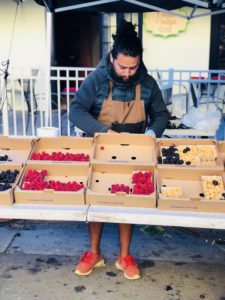
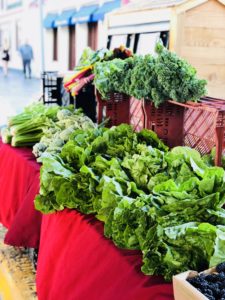
Cannery Row and Fisherman’s Wharf are great, but if you are visiting Monterey and really want the whole Monterey cultural experience, you really have to check out the Old Monterey Farmer’s Market. It is located on Alvarado Street between Del Monte and Pearl every Tuesday. Hours are October through April: 4:00-7:00 pm and May through September: 4:00-8:00 pm. You will NOT be disappointed! For more information, see oldmontereyfarmersmarket
-
Big Little Lies: Blue Blues Cafe

Big Little Lies Season 2 is in full swing, and since I was in the vicinity of the area Blue Blues Cafe scenes were filmed, I thought I would snap some pics. For those of you not familar with the famous HBO series, Blue Blues is the harborside coffee shop where Madeline, Celeste, and Jane meet to dish and commiserate over coffee and lunch.
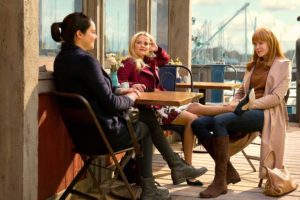
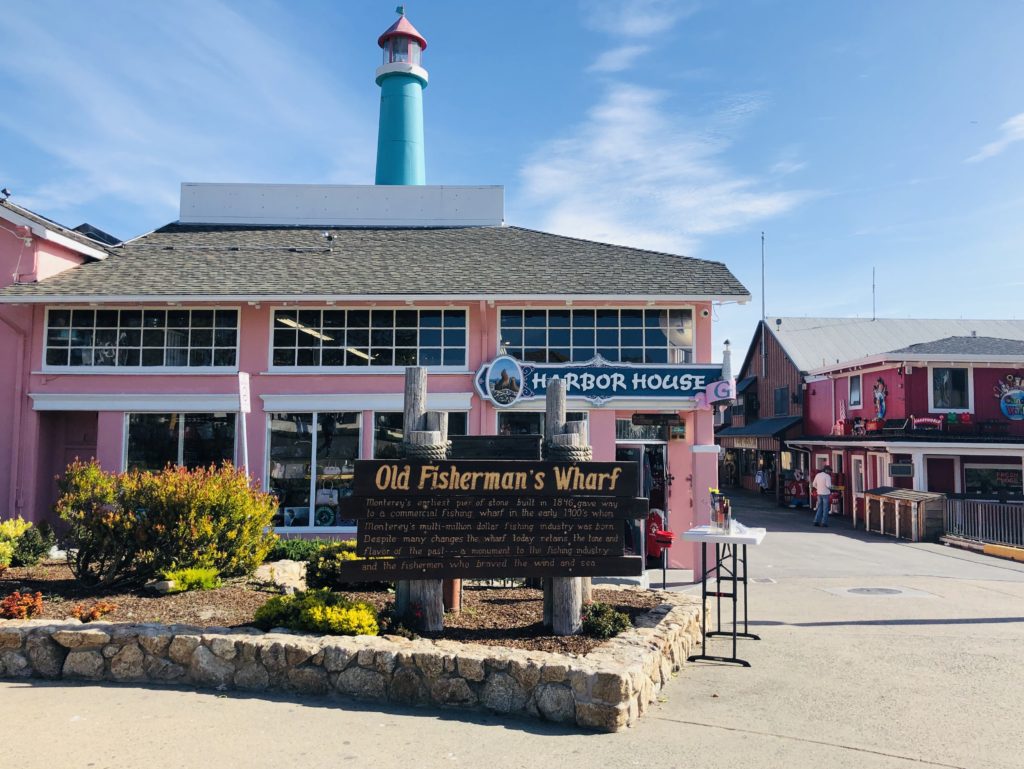
Blue Blues Cafe is actually a restaurant on Old Fisherman’s Wharf called Paluca Trattoria. Fisherman’s Wharf is generally a bustling, touristy area, filled with souvenir shops, eateries, and is the starting point for whale watching tours. It is hardly the place I would picture these three ladies meeting. However, when I turned the corner and discovered this more secluded and quiet place over the water, it definitely exuded the charm and ambiance seen in the film.
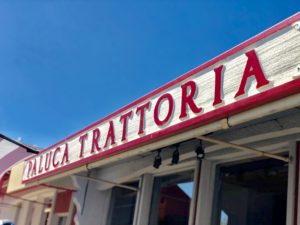
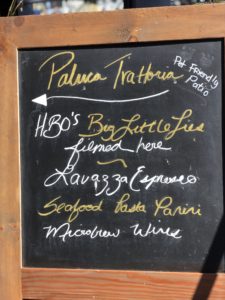
It looks exactly like it did in Big Little Lies. Amazing!
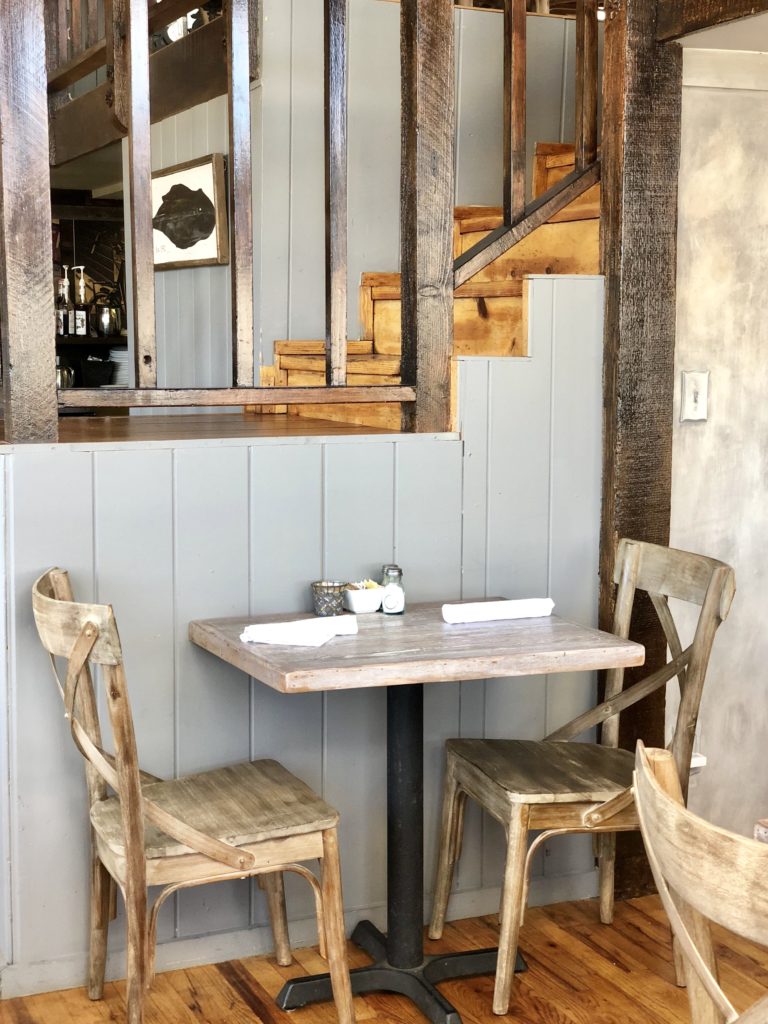
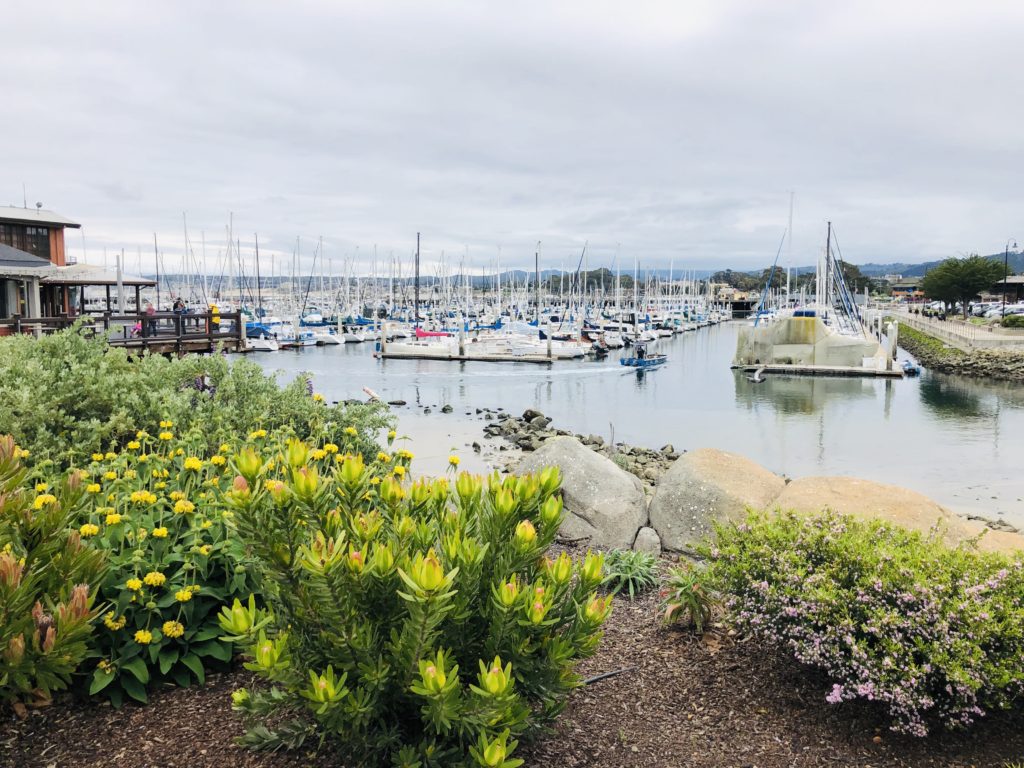
The view of the harbor from the restaurant is beautiful, with boats bobbing gently on the blue waves, seagulls gliding by, and the resident sea lions and otters making their own cameo appearances from time to time. It looks just as it must have looked to Celeste, Madeline & Jane as they sat in the sunshine with their espresso and schmoozed with the cute coffee guy, Tom.
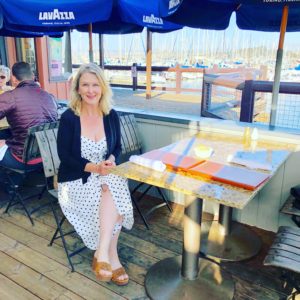
If you come to Monterey, you should take some time to visit this cozy place. Pick a chair overlooking the harbor, order an espresso, and contemplate the vagaries of life. I’m sure Tom, Celeste, Madeline, and Jane would approve.
Thank you for visiting my blog. Wishing you peace, love, happiness, and beautiful vistas!
-
Point Pinos Lighthouse, Pacific Grove
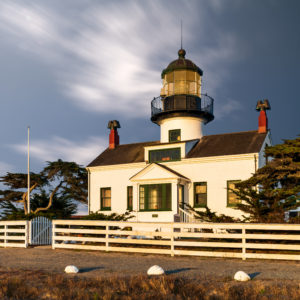
Point Pinos Lighthouse, located In Pacific Grove, is the oldest continuously operating lighthouse on the west coast of the United States. In 1855, it was the second lighthouse built in California. Alcatraz Island Lighthouse had been built 8 months previously, but in 1909 was replaced by the famous prison. Point Pinos was built atop a quaint house enabling keepers to tend the light without fearing the elements. Point Pinos Lighthouse uses a Fresnel lens manufactured in France in 1853. The beacon is still used by the Coast Guard to aid navigation and the city of Pacific Grove maintains the property. While it began as just a narrow light beam fueled by whale oil, in 1912 it used an “eclipse” that made the light blink on for 10 seconds and off for 20 seconds. Today, the light is electronic and is on for three seconds and off for one, which helps mariners identify it. Point Pinos stands 43 feet tall, approximately 90 feet above the ocean, and its lens can be seen 17 miles out to sea.
History
Point Pinos Lighthouse has had many keepers, but perhaps the most interesting was Emily Fish. Emily Fish’s sister died in childbirth, and at age 17, Emily married her dead sister’s husband, Malancthon Fish, and raised her sister’s baby daughter, Juliet. Mr. Fish, a medical doctor, died when Emily was 50 years old. Following his death, Emily applied for the position of lighthouse keeper at the Point Pinos Lighthouse in Pacific Grove, CA. This was considered highly unusual, as most women only received their positions upon the death of their lighthouse keeper husbands. Emily, however, was an anomaly. She bucked the norms and defied gender roles. She would not be foiled in her efforts, proving that no matter how old you are and what society thinks, you should always follow your dreams and aspirations.
She thrived in her position, and for over twenty years, lived and worked at the lighthouse with her menagerie of French poodles, Holstein cows, horses, and chickens. She excelled at gardening and created an oasis of grass, hedges, and trees on the lighthouse grounds. From her home in Oakland, she brought antique furniture, paintings, china, and silverware. Being a lighthouse keeper was no easy chore; rather, it was a difficult and demanding life. Emily, however, excelled at her job, and soon became known as the “Socialite Keeper” because of her flair for style and fashion and her reputation for entertaining guests at the lighthouse. During her keep, Point Pinos Lighthouse consistently received high marks for being well-kept.
While Emily is the most memorable female lighthouse keeper at Point Pinos, she was not the first. The light’s first keeper, Charles Layton, was serving on a posse in pursuit of an outlaw when he was fatally shot the first year he was appointed. His wife Charlotte, left alone with four children, replaced her husband as keeper until 1860 when she was remarried and her new husband took over the position.
If you are planning on visiting the area and would like to tour the lighthouse, please see pointpinoslighthouse for information including directions, hours, and parking. *Photo courtesy of Jay Slupesky, follow him on Instagram @jayslu
-
Butterfly Town: Pacific Grove
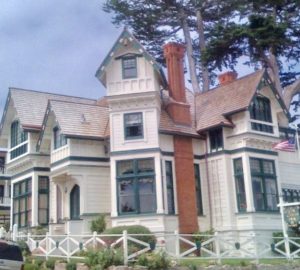
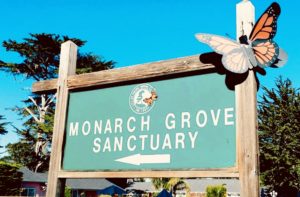
What do butterflies and quaint seaside Victorian houses have in common? Pacific Grove! Called “PG” by the locals, it is a quiet town filled with history and charm. It was originally a Methodist Church camp in the late 1800s and nowadays boasts more historical houses per capita than anywhere in California. Perhaps owing to its pious history, it was the last dry town in California and did not serve liquor until 1969! It is also known as Butterfly Town, due to the thousands of monarch butterflies that overwinter here on the Monterey pines and eucalyptus trees. You can see them at the Monarch Grove Sanctuary beginning in October through March, when they take flight to migrate as far away as Canada, laying their eggs on milkweed plants along the way. Every October, the town of PG holds a Butterfly Parade to celebrate the return of the monarchs, and the school children don colorful butterfly wings and march through the town. These gorgeous creatures are becoming endangered due to deforestation and development, and PG takes this very seriously. If you kill or threaten a butterfly in PG, you can get slapped with a $1000.00 fine. You can help support the butterfly population by planting milkweed! I did last year and hope to spot some of our orange & black friends at my farm.
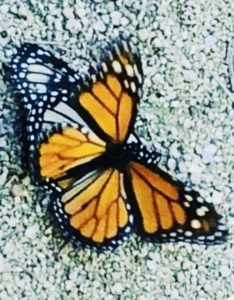
Pacific Grove is also home to the famed “Lover’s Point”, where Asilomar State Beach begins. Asilomar means “asylum or refuge by the sea”, and it fits this description perfectly. If you are looking for the best place to watch the sunset, this is it! It is pure heaven to wander along the wonderful walking/running trail lined with exotic shrubs and flowers next to the rocky coast and crashing waves and is one of my favorite places to take my dog for a walk. You can stop to examine the tide pools or watch the sailboats along the way.
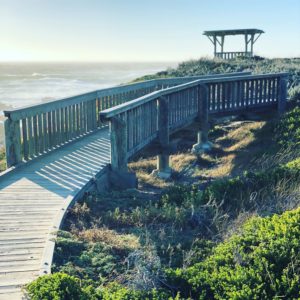
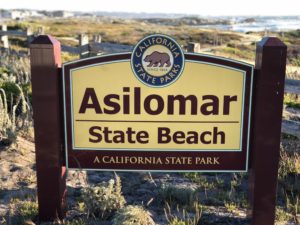
The Asilomar Conference Center, part of the Asilomar State Beach, was designed by Julia Morgan. Morgan is also famously known for being the architect of Hearst Castle, which lies much further down the coast. Asilomar was originally built in the early 1900s for the YWCA, and still retains a very lodge-like Arts and Crafts/Mission look, with wonderful shingled and stone buildings, cozy fireplaces and gorgeous lighting. Did you know that the first national discussion regarding recombinant DNA was held at Asilomar? Do you care? Just thought I’d throw that in there.
In July, PG hosts the Feast of Lanterns, a Chinese festival that lasts for a week and you will see lanterns hanging all over town at this time. In December, you can walk down “Candy Cane Lane”, and see all the festive lights and decorations for the holidays. There is also a tour of the amazing inns and bed and breakfasts at this time of year. My favorite is the Green Gables Inn, but really, they are all pretty amazing. There is always, ALWAYs something fun going on in PG!
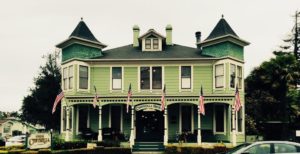
-
The Strange Saga of Monterey Jack
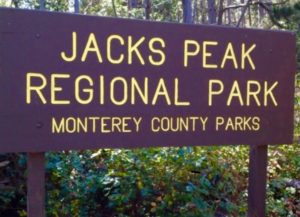
When I first moved to the Monterey area I joined a hiking group. One of the places we went hiking was Jack’s Peak Park, which includes acres of hiking trails through Monterey pine forest and a lovely vista of the Monterey Bay. It was during a hike at Jack’s Peak that I first heard the story of Monterey Jack. Being a former cheesehead and a cheese lover, I wanted to learn more. David Jacks, for whom the park was named, was a much hated land baron in the area. He was also a cheese baron. He owned 14 dairies and mass produced the cheese we know and love. And just as his method of attaining land remains dubiously questionable, so does his right to claim the name of this cheese. Some say that he copied the recipe from Franciscan monks who brought it from Mexico in the 1700s. Others say he swindled the recipe from other local cheese artisans. Unfortunately, we will never know. But we can still be grateful that, whatever its name, Monterey Jack cheese tastes delicious.
Here is one of my favorite comfort foods using this scrumptious cheese!
Monterey Mac & Jack
1 lb. elbow macaroni
4 cups milk
4 cups Monterey Jack cheese, grated
2 cups sharp cheddar cheese, grated
1 stick butter (8 Tbsp)
1/2 cup flour
1/2 tsp black pepper
Optional:
(1)14.5 oz. can diced tomatoes, drained
(1)7 oz. can diced green chiles, drained
- Cook macaroni per package directions.
- Melt butter on low heat, whisk in flour and gradually add milk, stirring constantly.
- Add cheese and pepper, blending until creamy and smooth
- Fold in cooked and drained macaroni
- Place in buttered casserole or baking dish
- If desired, top with tomatoes and chilesBake at 375 for 35 minutes or until top is bubbly and golden.

-
The Art of the Artichoke
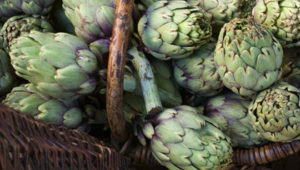
If you are from the midwest, chances are, like me, the closest you have been to an artichoke is eating the spinach artichoke dip at your nephew’s graduation party. In the Monterey area, however, artichokes are big, so big that they have an annual artichoke festival. It is actually an artichoke and WINE festival, because hey, what is a festival without wine? If you are in the Monterey area this weekend you should check it out! it is being held at the Monterey County Fair & Event Center. I went last year and the highlights for me were eating the fried artichoke hearts (super yum!) and listening to chefs from local restaurants discuss the proper way to cook fresh artichokes. To me, this was important, because the first time I tried cooking them it was a disaster. I learned that you do not boil them, you STEAM them. Eating them was also a novel experience. Here’s how: you take a leaf from the cooked artichoke, put the base of the artichoke leaf in your mouth, put your bottom and top teeth together, and slowly pull the leaf out, skimming the savory artichoke goodness off the leaf. The artichoke is actually the official state vegetable of California, and did you know? Nearly two-thirds of America’s artichokes are grown in Castroville, a small town located north of Monterey. Another interesting fact: Marilyn Monroe served as honorary queen of the Artichoke Festival in 1948 before she became famous.
One of my favorite ways to eat artichokes is in Lemon Chicken Artichoke Soup. My friend Anushka (yes, I named my goat after her) actually told me about this delicious recipe and I adapted it. If you need a light and nourishing soup to warm your spirits this is it!
Monterey Farmgirl’s Lemon Chicken Artichoke Soup
1 lb. skinless chicken breasts, cut into 1-inch pieces
3 leeks, sliced
2 tbsp olive oil
3 cloves garlic, minced
1 bay leaf
(1) 14 oz. can artichoke hearts, drained
4 cups chicken stock
1 cup kale leaves, torn
Juice of 1 lemon
1-2 tsp. thyme, chopped
Pepper to taste
Instructions:
- In a large pot, sautee the leeks in the olive oil for about 5 minutes, or until they are tender and start to turn golden.
- Add the chicken, garlic, bay leaf, artichoke hearts, chicken stock, kale, and thyme and bring to a simmer, cooking for 30 minutes.
- Add the lemon juice and pepper
-
Farm Life in the Monterey Countryside in June
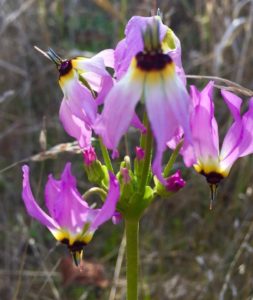
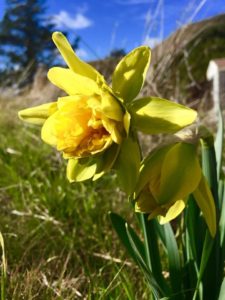
It’s life on the farm as usual. A bluebelly lizard is performing push-ups on the woodpile. He looks at me as if to assess my reaction. My goats, Anushka and Aliyah, are grazing nearby, chewing dead leaves and nibbling the moss on the fence posts. Harold, the rooster, stands nearby, and at times dances over to me, shaking his tail feathers. We have a love/hate relationship, Harold and I. He is either attacking me or flirting with me. He lives with Anushka and Aliyah in the little goat house and I believe he thinks he is a goat. Anushka and Aliyah love to eat, and unfortunately, are starting to eat their goat house just as Hansel & Gretel ate their gingerbread house in the fairy tale. Wildflowers are starting to bloom: pink shooting stars, deep purple lupines, and wild yellow jonquils are scattered over the hillside. Baby quails totter after their parents, who seem to cry out “Be careful! Be careful!” Hopefully, your weekend is filled with much peacefulness and happiness!
